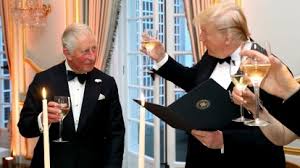
WASHINGTON — The Supreme Court has been very good to President Donald Trump lately. Even before he won a new term in the White House, the court eliminated any doubt about whether Trump could appear on presidential ballots, then effectively spared him from having to stand trial before the 2024 election on criminal charges he tried to overturn the 2020 election. That same ruling spelled out a robust view of presidential power that may well have emboldened Trump’s aggressive approach in his second term.
In the five months since Trump’s inauguration, the court has been largely deferential to presidential actions, culminating in Friday’s decision to limit the authority of federal judges who have sought to block Trump initiatives through nationwide court orders.
The decisions from a court that includes three justices Trump appointed during his first term have provoked a series of scathing dissents from liberal justices Sonia Sotomayor and Ketanji Brown Jackson. They accuse the conservative supermajority of kowtowing to the president and putting the American system of government “in grave jeopardy,” as Jackson wrote Friday.
Justice Amy Coney Barrett, author of the opinion limiting nationwide injunctions, responded to Jackson’s “startling line of attack” by noting that she “decries an imperial executive while embracing an imperial judiciary.”
To be sure, the court has not ruled uniformly for Trump, including by indefinitely stopping deportations to a notorious prison in El Salvador without giving people a reasonable chance to object. But Trump’s victories have dwarfed his losses. Here are some takeaways from the Supreme Court’s term:
The real action was on the court’s emergency, or shadow, docket
That’s where the court deals with cases that are still in their early stages, most often intervening to say whether a judge’s order should be in effect while the case proceeds through the courts.
While preliminary, the justices’ decisions can signal where they eventually will come out in the end, months or years from now. Emergency orders are generally overshadowed by decisions the justices issued in the cases they heard arguments between last fall and the spring.
Almost since the beginning of Trump’s second term, the court’s emergency docket has been packed with appeals from his administration. For a while, the justices were being asked to weigh in almost once a week as Trump pushed to lift lower court orders slowing his ambitious conservative agenda.
Trump scored a series of wins on issues ranging from the revocation of temporary legal protections for immigrants to Elon Musk’s dramatic cost cutting at the Department of Government Efficiency.
And that was before Friday’s decision on nationwide injunctions, court orders that prevent a policy from taking effect anywhere.
Many of the recent orders are in line with the conservatives’ robust view of executive power.




